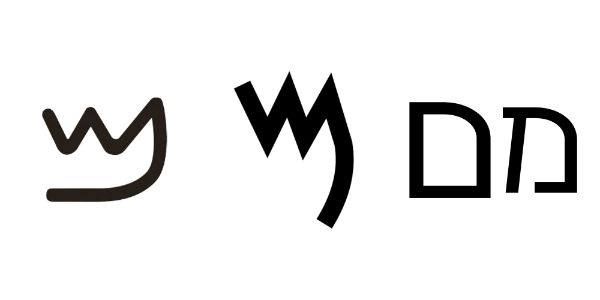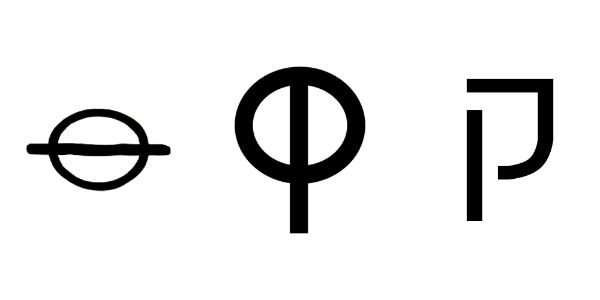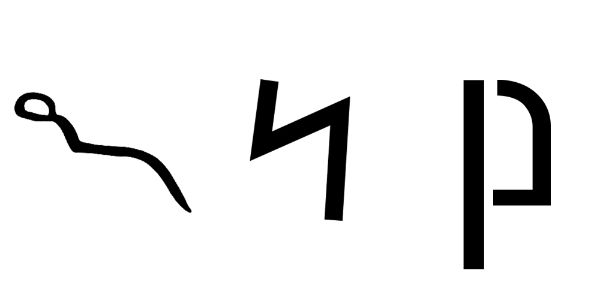The word yad (𐤉𐤃) means “hand” meaning either of two large, humped, ruminant quadrupeds of the genus Camelus.
The Paleo-Hebrew language or the original language of the Ābarayam is one spoken with an emphasis on the rauakh (breath, wind, spirit). With the language of the Ābarayam, each letter has a meaning and a number associated with it that adds meaning to each word they’re used with. Below you will be able to learn more about the letter in Ancient Hebrew, Yiddish Hebrew, Greek, and much more.
Letter Meanings
| Letter | Meaning |
|---|---|
| 𐤉 (y) – ya | arm, hand, work, thrust, deed, make, throw, worship Prefix: he/she, turns a word third person |
| 𐤃 (d) – da | Tent door, pathway |
| Ābarayat Number | 14 = 10 (y) + 4 (d) |
| Hebrew Gematria | |
| English Gematria | |
| Simple Gematria |
Based on the meaning of the letters the word could be defined as:
- “worship pathway”
- “create a pathway”
- “work of pathway”
Definitions for 𐤉𐤃 / yad
| Language | Word | Transliteration | Pronunciation | Definition |
|---|---|---|---|---|
| Ābarayat | 𐤉𐤃 | yad | yad | hand, power |
| English | hand | hand | hand | the terminal, prehensile part of the upper limb in humans and other primates. |
| Hebrew | יָד | yad | yawd | hand |
| Arabic | يد | yd | yawd | hand, duke, panhandle |
| Greek | χείρ | cheir | khire | hand |
Images for 𐤉𐤃 / yad


Definitions for 𐤉𐤃𐤉 / yaday
When adding the 𐤉 (yad) to the end of a word, it creates a possessive of the original word. It can either signify “my…” or identify a member of a nation. For example, 𐤏𐤁𐤓 (Ābar) is the progenitor, but 𐤏𐤁𐤓𐤉 (Ābaray) is the singular descendant of him also known as a Hebrew.
| Language | Word | Transliteration | Pronunciation | Definition |
|---|---|---|---|---|
| Ābarayat | 𐤉𐤃𐤉 | yaday | ya-dey | by |
| English | by | by | bahy | near to or next to |
| Hebrew | ||||
| Arabic | ||||
| Greek |
Images for 𐤉𐤃𐤉 / yaday


Definitions for 𐤉𐤃𐤉𐤌 / yadayam
When adding the 𐤌 (mayam) after the 𐤉 (yad) to the end of a word, it creates a plural of the original word. It can identify multiple members of a nation. For example, 𐤏𐤁𐤓 (Ābar) is the progenitor, but 𐤏𐤁𐤓𐤉𐤌 (Ābarayam) are the plural descendants of him also known as Hebrews.
| Language | Word | Transliteration | Pronunciation | Definition |
|---|---|---|---|---|
| Ābarayat | 𐤉𐤃𐤉𐤌 | yadayam | yad-yawm | hands |
| English | hands | hands | hands | the terminal, prehensile parts of the upper limb in humans and other primates. |
| Hebrew | ||||
| Arabic | ||||
| Greek |
Images for 𐤉𐤃𐤉𐤌 / yadayam


Definitions for 𐤉𐤃𐤉𐤕 / yadayat
When adding the 𐤕 (tau) after the 𐤉 (yad) to the end of a word, it creates a plural of the original word. It identifies the language or a sign of a nation’s existence. For example, 𐤏𐤁𐤓 (Ābar) is the progenitor, but 𐤏𐤁𐤓𐤉𐤕 (Ābarayat) is the language of him also known as Paleo-Hebrew language.
| Language | Word | Transliteration | Pronunciation | Definition |
|---|---|---|---|---|
| Ābarayat | 𐤉𐤃𐤉𐤕 | yadayat | yad-yawt | handle |
| English | handle | handle | han-dl | a part of a thing made specifically to be grasped or held by the hand. |
| Hebrew | ||||
| Arabic | ||||
| Greek |
Images for 𐤉𐤃𐤉𐤕 / yadayat


Classification
You can continue your studies of the words by viewing Strong’s entries for:




